Analyzing the degree of technical cleanliness of components. Keys to successfully conducting the test
The “Technical Cleanliness Test of Components” or “Cleanliness Test” aims to ensure that, prior to assembly, parts are free of pollutant elements that could negatively affect the performance and/or safety of sealed systems and hydraulic circuits. Contaminants that can compromise the functionality of these critical systems include solid particles, dust, traces of lubricants and oils, and other chemical contaminants.
The Cleanliness Test is performed with a systematic approach, in which the identification of the characteristics and specifications to be met regarding the degree of cleanliness, the determination of the most appropriate test procedure, and the analysis and evaluation of the retained dirt detected are fundamental aspects.
- Regulations: The main international standards that establish the cleanliness levels that components must meet are ISO 16232:2018 (“Technical Cleanliness Level of Automotive Components and Systems”) and VDA Guide 19. These include the most appropriate testing methods, as well as guidelines on sampling methods, analysis, and acceptance criteria.
- Assessment Methods: Assessment methods can include visual inspection techniques, gravimetric analysis, and chemical analysis. The selection and combination of methods to be applied depends on the type of component (depending on its function), the type of contaminant, and specific requirements established by the client or manufacturer.
- Classification of pollutants: Contaminants extracted from parts can be classified into two main categories: visible contaminants (dust and particles) and invisible contaminants (chemical residues). In the case of particles, they are categorized into metallic and non-metallic particles.
Below are some important aspects to consider to, step by step, ensure the quality of the results in Cleaning Tests.

Related contents
1. Sampling
- Samples should be collected as soon as possible after the parts are manufactured. This reduces the risk of them coming into contact with contamination.
- Sample batches must have a total surface area of at least 200 cm2.
- It is important to take measures to avoid contaminating the samples during the sampling process.
2. Packaging and Shipping Samples to the Testing Laboratory
- Appropriate packaging for shipping the samples to the testing laboratory should not add particles to the samples.
- The packaging should prevent the entry of contamination.
- The most recommended packaging format is polypropylene bags or antistatic plastic bags protected with bubble wrap.
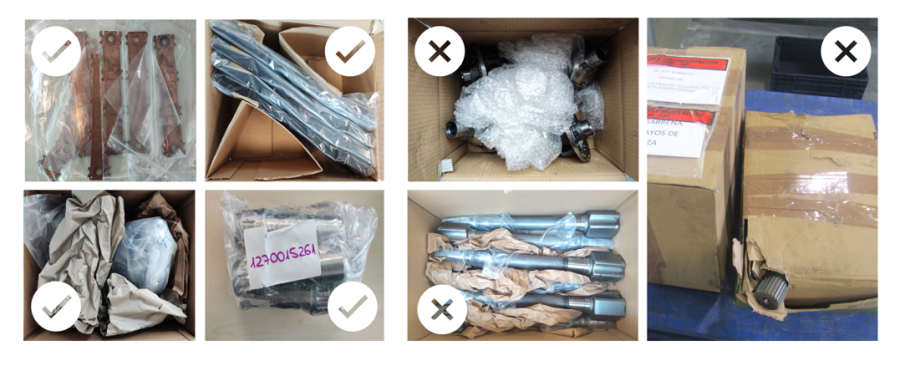
Left: Examples of samples properly packaged for shipment to the testing laboratory. Right: Defective packaging that allows dirt to enter and prevents proper test execution.
3. Preparation of the test
1) Sample analysis and test definition
- Reading and interpretation of part drawings.
- Analysis of standard and client requirements.
- Performance of the Declining test (as determined by ISO 16232:2018).
2) Media and equipment setup
- Filter conditioning.
- Cleaning of cabin and material.
- Blank level (10% of the required value).
To prevent contamination during the unpacking and testing of parts, the Technical Component Cleanliness Test must be carried out in ad-hoc facilities.
- Clean room with vacuum system
- Ad-hoc cleaning booth, properly calibrateda
The personnel performing the test will use appropriate equipment and clothing to prevent the transfer of any element that could affect the test results.
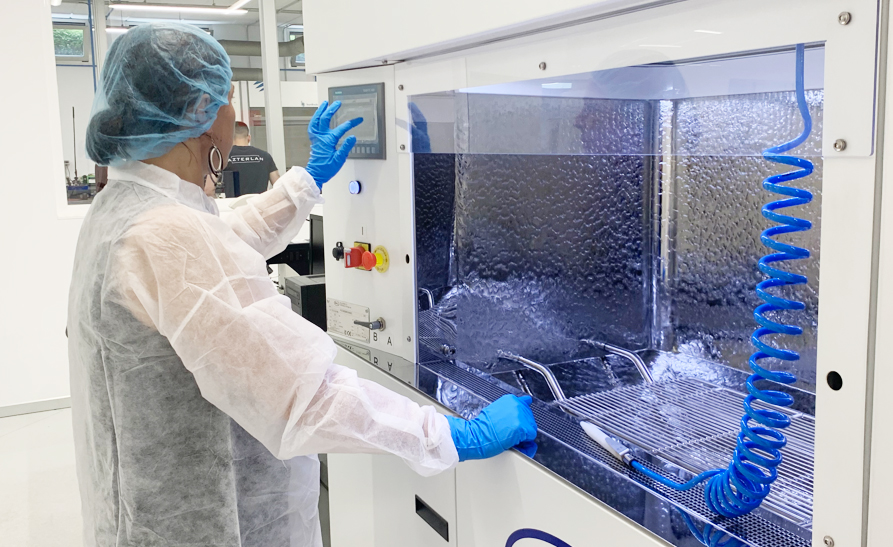
4. Test Execution: Dirt Extraction
- Washing of the component under the conditions extrapolated from the Declining Test.
- Final rinse.
- Filtering of the washing liquid and drying of the filter for subsequent analysis.
Ultrasound Cleaning Extraction
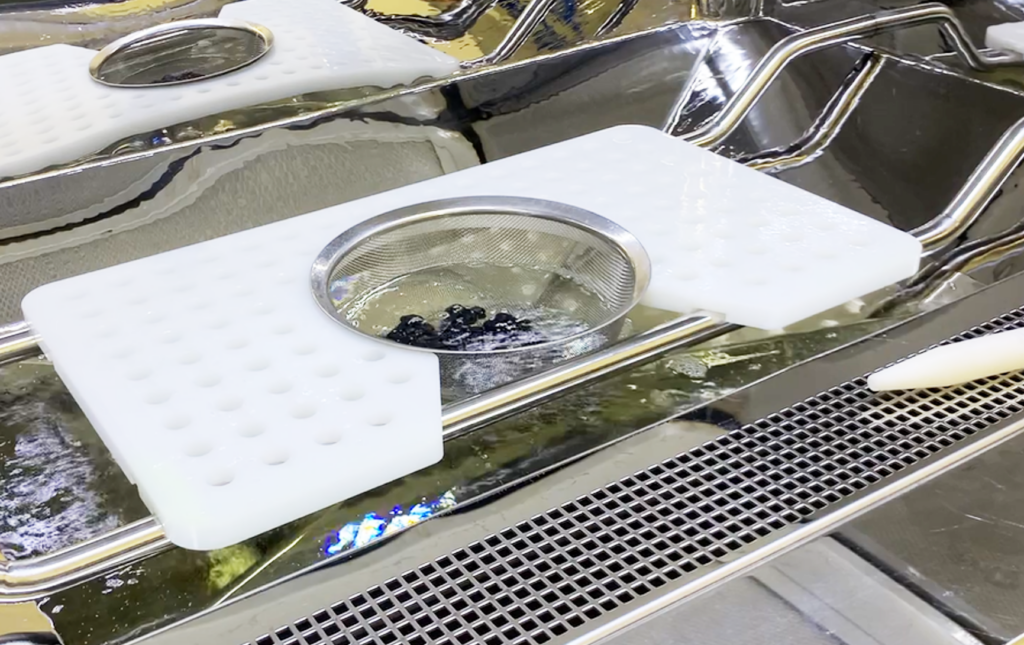
Pressure Washing Extraction
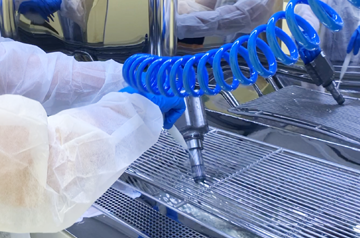
Extraction using an ultrasonic bath:
- Suitable for batches of small parts.
- Inspection of external and internal geometries.
- A highly effective but aggressive technique.
- Not suitable for cast parts, cast aluminum, painted or coated parts, sintered parts, etc.
Extraction using pressure washing:
- Suitable for large and small parts.
Inspection of easily accessible external and internal geometries.
5. Evaluation of the results
- Gravimetric evaluation: After the filter has dried, it is weighed to determine the mass of contaminant retained.
- Assessment of retained particles: The size, nature (metallic or non-metallic), and number of retained particles are determined.
- Other analyses: If deemed necessary, the collected samples can be subjected to other characterization tests to determine their composition or nature.
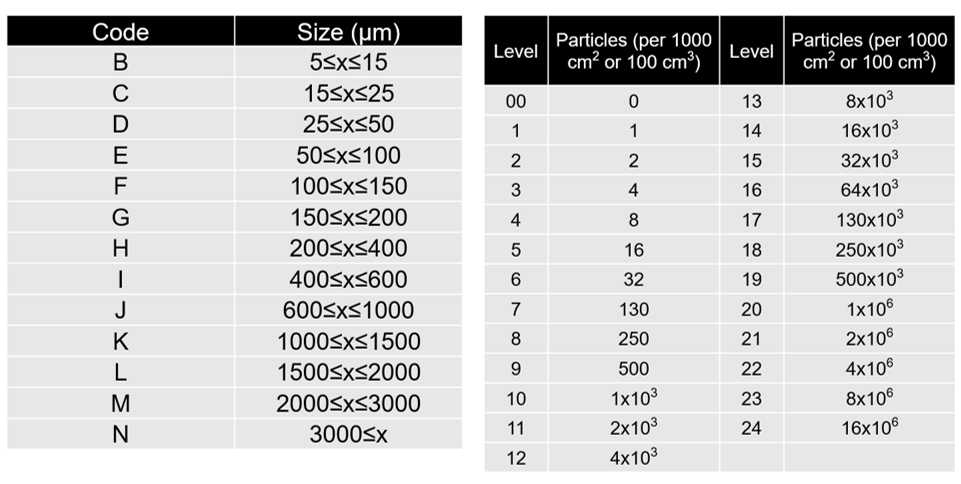
Expression of results according to ISO 16232:2018.
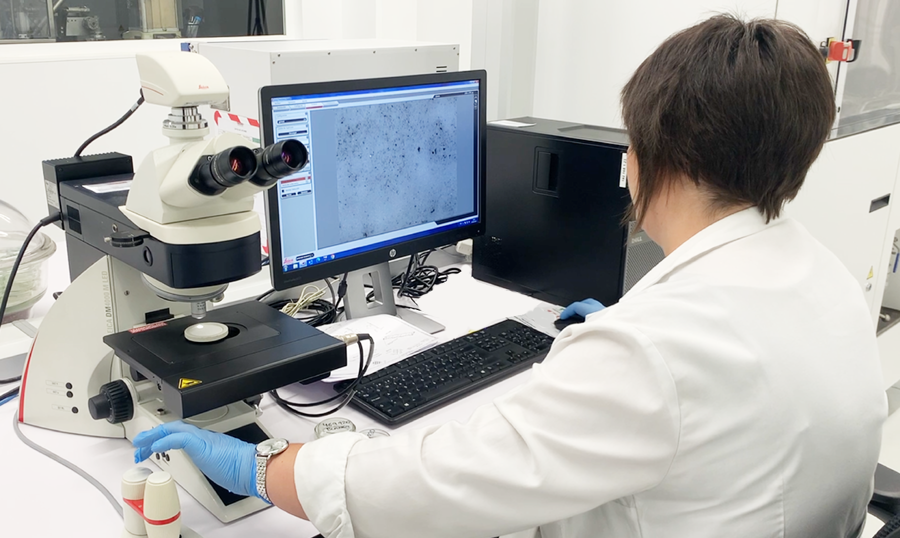
Analysis of particles retained in the filter using Leica Cleanliness Expert 4.5.0 software at AZTERLAN facilities.

